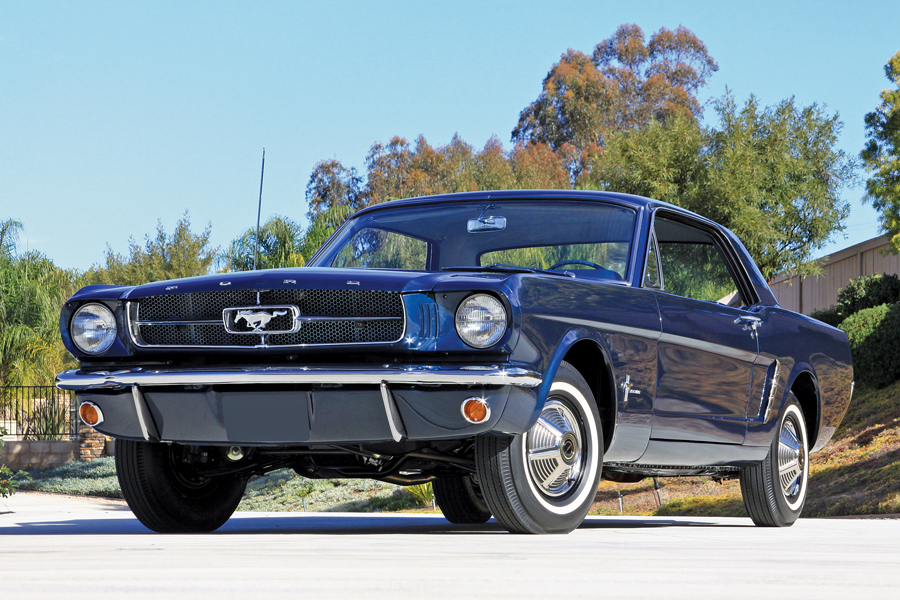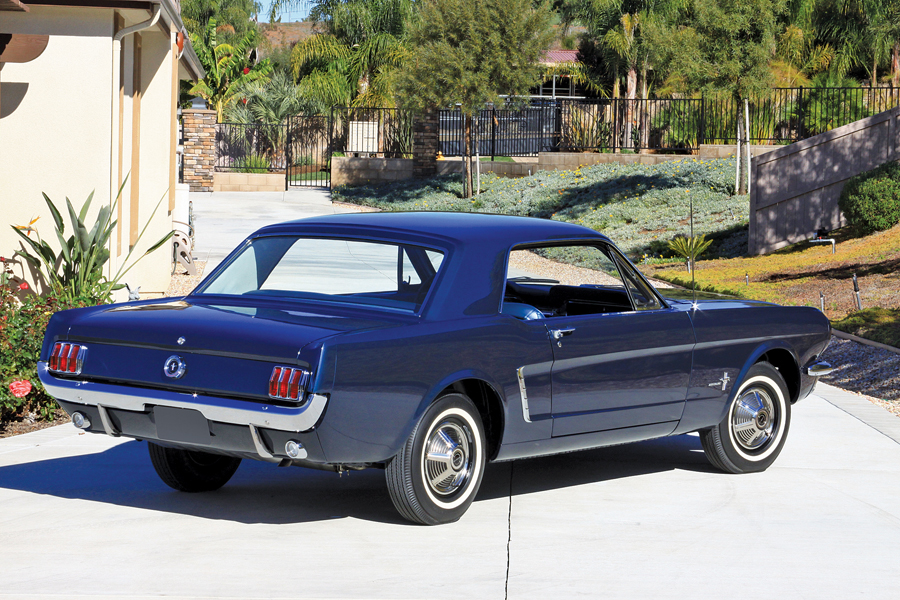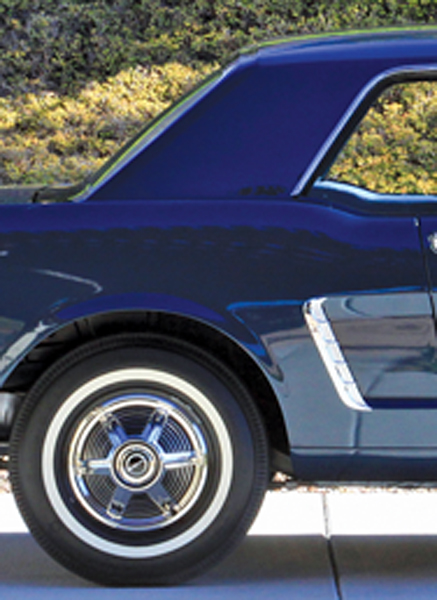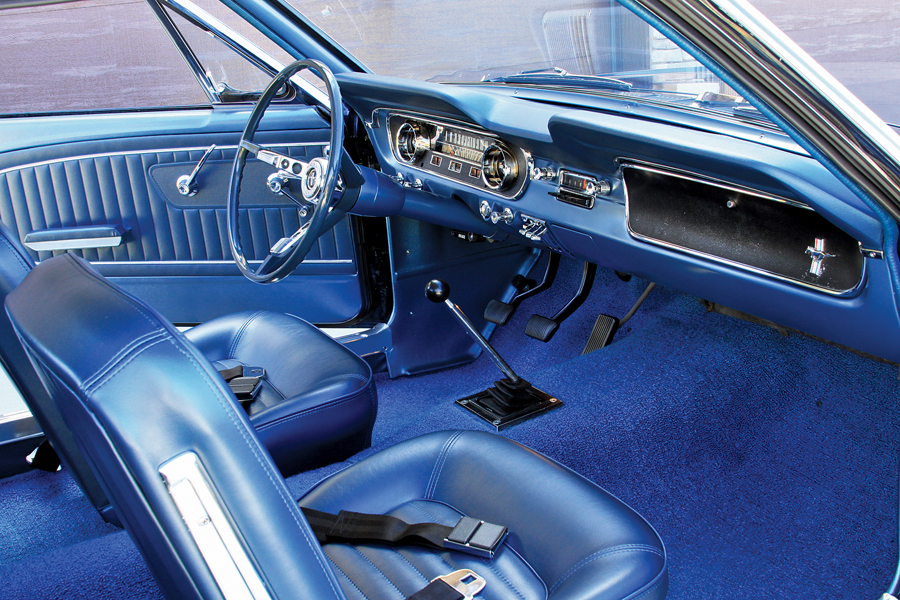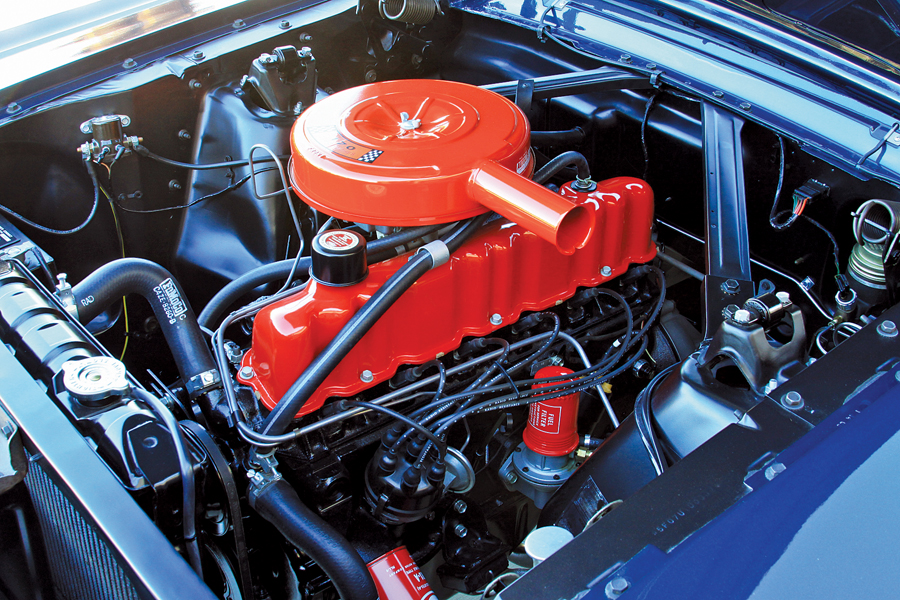This is the very first Ford Pilot Plant/Pre-production Mustang hard top.
This 1965 Mustang started the Pony Car revolution in American car building, resulting in the later creation of the Camaro and Firebird. It was hand-assembled at the Ford Pilot Plant and is one of three known existing Pilot Plant Mustangs to survive.
SCM Analysis
Detailing
| Vehicle: | 1965 Ford Mustang Pre-Production |
| Years Produced: | 1965 |
| Number Produced: | 409,260 coupes |
| Original List Price: | $2,372 |
| SCM Valuation: | $18,500 |
| Tune Up Cost: | $300 |
| Chassis Number Location: | Driver’s side fender apron |
| Engine Number Location: | Front of the block on the passenger’s side — above the oil pan |
| Club Info: | Mustang Club of America |
| Website: | http://www.mustang.org |
| Alternatives: | 1966 Henry Ford II Mustang GT convertible, 1965 Pilot Plant Ford Mustang convertible, 1966 Shelby GT350 |
| Investment Grade: | A (for this car) |
This car, Lot 1365, sold for $192,500, including buyer’s premium, at Barrett-Jackson’s January 12–20, 2019, auction in Scottsdale, AZ.
From day one, the Mustang was on a trajectory to stardom that most cars can only dream of achieving. From the day it hit the showroom floors, sales skyrocketed, with enthusiastic men and women eagerly signing the bottom line to drive one home.
In fact, the very first regular production Mustang sold to the public is still owned by the original owner today, a baby-blue 260-ci convertible. That story still waits to be told.
From the end of the launch year in March of 1964 to the end of the 1965 production, Ford put 686,000 Mustangs in buyers’ garages. Within the first 18 months of production, the Ford Mustang hit the 1 million mark.
It was an amazing car with a perfectly timed debut.
Young buyers were ready to open their wallets for a car that was stylish, sporty and fun to drive. The Mustang also came in three configurations: the humble coupe, the well-styled fastback and the open-road convertible.
Our subject car is special only because it is the first Ford Pilot Plant/Pre-production Mustang hard top.
Big bucks for a bare-bones Mustang
Our subject car is one of only three known serialized existing Pilot Mustangs to survive. Any Ford collector — especially a Ford Mustang collector — lusts for this car. Bearing VIN sequence number 100002, you simply can’t ask for anything much better — other than convertible 5F08F100001 — which is owned by Ford and on display at the Henry Ford Museum.
Actually, I take that back. You could want something much better. We’ll talk about that in a little bit.
Prototype touches
The car wears special touches that you simply won’t find on any production Mustang — even the very early 1964½ models.
The unique features include prototype sheet-metal stampings, different welds and a straight floor shifter. The car received “show car” smoothing of the visible weld marks. These were done at the Ford factory, so the car would show better — with a higher attention to detail — than it would have displayed as a regular production line car.
All boxes ticked
The history and documentation on the car are airtight — as in space-station airtight.
There’s no wondering about the provenance of the car. Ford even verified that it is indeed a pilot pre-production example — and one of the very first that were serialized, so it could be shipped to a Ford dealer to be placed on display.
In fact, the car was shipped to Brown Brothers Ford in Vancouver, Canada, but, for some unknown reason, it ended up finding its first home at Whitehorse Motors in the Yukon Territory.
A no-sale at Mecum Indy 2017
Chassis SF07U100002’s first public sale attempt came at the Mecum Indy sale in 2017.
The owner for the past 19 years — a nationally known Mustang historian and author — had decided to sell the car. However, the seller and Mecum came up with a $450,000 to $650,000 pre-sale estimate.
That’s a pretty aggressive number.
The main problem is that you really don’t have any comps. It’s not like there’s another Mustang Pilot VIN #2 out there — and we already know that VIN #1 is in the Henry Ford Museum.
Owning the “first” of just about any car is always a powerful tool you can use to pump up the value.
Our subject car reached a high bid of $300,000 — but didn’t sell at Mecum’s May 16, 2017, Indianapolis Auction. Hindsight is always perfect, but that is a lot more than it brought at Barrett-Jackson’s 2019 Scottsdale Auction. This car is perfect for both of those auctions, but you’d think it would do better at Barrett-Jackson in Scottsdale. That’s where all the big collectors — and bidders — go every year.
Too basic to fly high
For me, and maybe it’s just me, Mecum’s estimate of $450k–$650k was a full swing at the fences. While I absolutely agree that it’s a very important Mustang, the car falls short on a few requirements of a top-notch collectible motorcar.
First and foremost, this is about as basic as a Mustang could be in 1965. The car has an inline 6, manual 3-speed transmission — and really no other options. It’s also a humble coupe.
Even when a Mustang coupe is well equipped and expertly restored, they generally sell in the low-$20,000 range. It’s simply not a car that sets off performance or styling fireworks. Had it been a convertible with the highest-spec 260-ci V8 engine at the time, we’d have a different discussion — and a much higher sales price. But it’s not.
Please don’t misread the tea leaves here. I’m not beating up the car, just discussing the overall collectible appeal. Plus, it did sell for about 12 times the value of a Plain-Jane restored coupe. So the collectible factor did ring the bell for the buyers in the room — just not to the tune of $500k.
Humble coupe, humble price
In the final analysis, we either have a car that was widely well bought or modestly well acquired. If we look back at significant Mustangs that have sold over the years, every one of them rang the bell from a performance view. K-code convertibles, Shelbys, high-horsepower fastbacks, Boss 302s, Boss 429s and so on.
Top-selling Mustangs always have high-watermark styling and terrorizing street engines. They have represented the cars that gearheads wanted all along — but couldn’t necessarily afford when they were new.
A base-model, stripped-down coupe doesn’t create enough emotional firepower to get buyers digging deep — even if it is the most special base-model, stripped-down coupe on the planet.
Yes, this car is an important Mustang, and it always will be.
But it is not the right car to represent what the Mustang would ultimately become: a high-performance street machine. I would have suggested a sales estimate in the $250k range, plus or minus that number. This is simply an educated guess — but I’ll stick with it.
As such, I’d call VIN SF07U100002 slightly well bought — if not a market-correct result. ♦
(Introductory description courtesy of Barrett-Jackson.)
